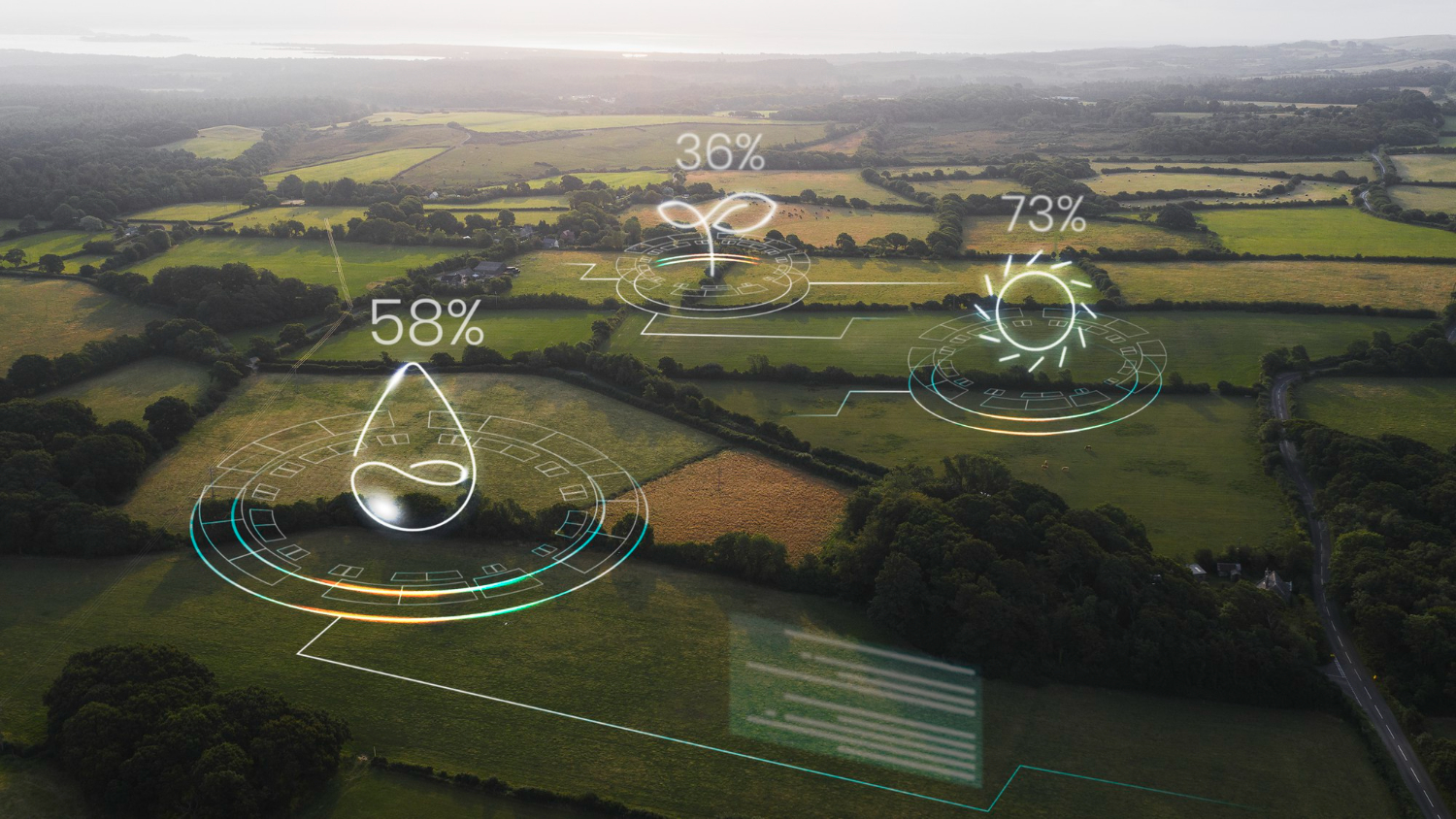Conheça nossas soluções
Atmospheric pollution

Air Emissions Inventory
The inventory consists of quantifying air emissions by source type and pollutant.
Some pollutants quantified in the inventory include: nitrogen oxides (NOx), sulfur oxides (SOx), carbon monoxide (CO), particulate matter (PM, PM10, PM2.5), and volatile organic compounds (VOCs).
The results of the inventory are compared to the emission limits established by federal and state regulations.
These results can also serve as input parameters for air dispersion modeling to verify compliance with air quality standards by the enterprise.
Air Quality Dispersion Modeling (AERMOD Software)
The Air Quality Dispersion Modeling is a tool for evaluating the impacts of emissions from an enterprise in the region where it is located.
The modeling allows the environmental impact of a licensed enterprise to be assessed, with the option of considering the background concentration of pollutants already present in the study area. The results are compared to applicable air quality standards.
Dispersion simulations make it possible to determine the best options for designing heights and location of emission stack heights. If the installation of an air quality monitoring station is required, the Air Quality Dispersion Modeling helps identify the most suitable locations.
When the company is in the design phase, mathematical modeling enables verification of whether the placement and characteristics of the stacks comply with legal standards, optimizing the project and avoiding future adjustments due to stricter air quality regulations.
Air Quality Diagnosis Study
The air quality diagnosis begins with the collection of air quality monitoring data. Based on the analysis of these monitoring results, a diagnosis of the air quality within the area of influence or region of interest can be conducted.
The diagnosis can be based on primary data—when monitoring equipment is installed specifically to collect data in the study region—or secondary data, when existing local data is used. Often, information about sources present in the region is also considered.
Monitoring can be carried out for various types of air pollutants, including both primary emissions and secondary pollutants, which are formed in the atmosphere through reactions depending on local air characteristics and composition.
Air quality standards are defined by specific federal or state regulations. In addition to regulated atmospheric pollutants, the monitoring of volatile organic compounds (VOCs) is crucial in studies due to their potential environmental and human health impacts
Air Emissions Monitoring Plan (PMEA)
The Air Emissions Monitoring Plan (PMEA) must be submitted prior to conducting stack and duct sampling for validation by the environmental agency when applying for an operating license and/or license renewal.
The PMEA includes a detailed description of emission sources, monitoring and analysis methodologies, monitored parameters, frequency, and schedule according to the specific categories of sources in the facility.
Study on Air Emission Control
The study of air emission control involves the characterization of emissions from the source of interest and an evaluation of the possibility of reducing emissions or the need for a control system.
If a control system is required, a study is conducted to determine the most appropriate technology for emission control, following the Best Available Environmental Practice and Best Available Technology.
In the analysis of existing control equipment, operational and maintenance aspects are evaluated with the aim of achieving optimal performance.
Study on the Evaluation and Management of Odor Emissions
When odor is noticeable beyond the boundaries of the industrial property, it can cause discomfort and unease in the surrounding area.
In an industrial region or even within a single facility, there can be multiple sources of odor emissions, which makes it difficult to define effective actions to minimize the impact.
Characterizing the sources of odorous substance emissions is a crucial step in addressing the problem. Emission control measures are associated with changes or control of the production process, as well as the installation of control equipment and monitoring of its performance.
The search for solutions to odor problems helps maintain suitable working conditions for employees and fosters good relations with the community, in addition to ensuring compliance with state and federal regulations related to the issue.
Air Quality Monitoring

Monitoring of Volatile Organic Compounds (VOCs) for Air Quality – Passive Sampling
ARES offers monitoring and assessment of air quality through strategic partnerships with certified laboratories, employing both passive sampling methods and active sampling techniques using adsorbent resin tubes or canisters.
Our goal is to determine the concentration of volatile organic compounds (VOCs) in outdoor and indoor environments. Results are compared with applicable national and international air quality standards, or with custom reference values defined by the client. This evaluation is essential to understand and manage the exposure of people and the environment to potentially harmful substances, supporting decisions in environmental management, health protection, and occupational safety.
ARES also applies USEPA Methods 325A and 325B, recognized standards for the passive sampling of VOCs, ensuring accurate and reliable monitoring for long-term exposure assessment, especially in industrial settings.
Biomonitoring of Air Quality
ARES provides biomonitoring services that use living organisms—especially plants—to assess air quality with precision. This method allows for the detection of air pollution and contamination through biological responses, offering a natural and effective way to evaluate environmental conditions.
Biomonitoring plays a key role in the development of environmental conservation strategies and in the assessment of health and ecological risks in both urban and rural areas. It serves as a valuable tool for long-term monitoring and supports decision-making in public policy, environmental licensing, and sustainability initiatives.
Active Biomonitoring
This method involves the use of bioindicator plants cultivated at the site of interest. After a defined exposure period, the plants are analyzed to detect the accumulation of toxic substances, as well as morphological and physiological changes that may serve as indicators of environmental stress.
For example, visible leaf damage after ozone exposure may include interveinal pigmentation on the adaxial surface, caused by the accumulation of phenolic compounds.
Passive Biomonitoring
In passive biomonitoring, we use native plant species that naturally occur in the region. These plants, already adapted to the local environment, are examined for health, growth patterns, and contaminant levels in their tissues. This approach provides valuable insights into environmental impacts and long-term ecological changes in the area.
Greenhouse gases

Greenhouse Gas (GHG) Inventory
The Greenhouse Gas (GHG) Inventory is the process of quantifying emissions of gases that contribute to the greenhouse effect, whether from an organization or a specific product.
The inventory is prepared according to pre-defined scopes:
- Scope 1: Direct emissions (from owned or controlled sources)
- Scope 2: Indirect emissions from purchased energy
- Scope 3: Other indirect emissions that occur in the value chain but are outside the organization’s direct control
ARES conducts GHG inventories in accordance with the GHG Protocol Brazil and follows the guidelines of ABNT NBR ISO 14064-1 and ABNT ISO/TR 14069.
In addition to preparing the inventory, ARES works alongside companies to define emission reduction targets and establish performance indicators that support improved environmental management and sustainability practices.
Environmental management

Environmental management
Environmental management can be conducted following specific standards aimed at achieving environmental certification, in which a certifying body verifies compliance with applicable regulations and issues a certificate confirming adherence to environmental standards and legislation.
Another effective approach to environmental management is through the systematic verification of legal compliance combined with the adoption of best environmental practices. This ensures that the organization not only meets but often exceeds regulatory requirements.
It is important to note that environmental management does not replace the environmental licensing process but rather adds value to it. It must remain active even when valid licenses are in place. In addition to observing applicable environmental legislation at the federal, state, and municipal levels, organizations must also comply with the specific conditions outlined in their environmental licenses.
Environmental Licensing

Environmental Licensing
Environmental licensing is a legal requirement for projects or operations that have the potential to cause environmental impacts. In certain cases, projects may be exempt from licensing, provided they meet specific criteria defined by regulatory authorities.
Licensing can occur at municipal, state, or federal levels, depending on the nature and scope of the project.
ARES provides comprehensive support throughout the environmental licensing process, including document preparation, technical studies, and specialized assessments required by regulatory agencies.
Environmental Monitoring Programs
As part of the environmental licensing process, environmental monitoring programs are developed to define the parameters to be monitored and the procedures to be followed. These programs are designed to minimize environmental impacts and ensure compliance during both the construction (installation) and operation phases of a project.
ARES designs monitoring programs that are tailored to each project’s specific environmental aspects, ensuring that monitoring is effective, practical, and aligned with regulatory expectations.
Wastewater

Wastewater Treatment
ARES conducts performance evaluations of wastewater treatment plants to ensure that systems are operating efficiently and in compliance with environmental standards.
These evaluations support the optimization of treatment processes; help identify potential improvements and contribute to environmental compliance and operational efficiency.
Solid Waste

Solid Waste Management Plan (SWMP)
The Solid Waste Management Plan (SWMP) for industrial waste and the Construction Waste Management Plan are essential tools for the identification, inventory, control, storage, and sustainable disposal of waste.
Companies that effectively manage their waste can adopt more sustainable disposal practices and increase opportunities for waste reduction and reuse within their operations.
The National Solid Waste Policy (Law No. 12.305/2010) in Brazil requires the preparation of waste management plans and annual waste inventories. These must be submitted to IBAMA through the Annual Report on Potentially Polluting Activities (IBAMA Normative Instruction No. 6/2014), as well as to state environmental agencies, when applicable.
Climatology and meteorology

Diagnostics and Assessment
ARES provides climatological diagnostics to characterize the study region. This includes the identification of active meteorological systems, analysis of their characteristics, and the development of weather forecasts tailored to the region.
We conduct the collection and validation of meteorological data to support regional characterization and enable the assessment of air quality, including the analysis of pollutants and their interaction with meteorological variables.
Additionally, we assess microclimate changes resulting from land use modifications, such as the large-scale installation of photovoltaic panels, which can significantly influence local climate conditions.
Trainings

Our Courses
ARES offers specialized training courses in the following areas: air pollution, solid waste management, effluent treatment, occupational safety, corporate sustainability, among others.
Courses are available on demand and can be delivered in various formats:
- In-person courses, conducted in-company or at designated venues
- Hybrid courses, combining in-person and online instruction
ARES is committed to sharing the practical knowledge and expertise of its team to support the professional development of individuals and organizations working in the fields of environment and safety.
Reports

Sustainability Reports
Preparing a Sustainability Report in accordance with GRI (Global Reporting Initiative) standards is essential for companies seeking to demonstrate transparency and commitment to environmental, social, and governance (ESG) best practices.
ARES offers comprehensive consulting services to support the development of this strategic document, ensuring your organization aligns with international reporting standards.
Our process includes:
- Planning and definition of material topics
- Structuring the report framework
- Data collection and analysis
- Content development and writing
- Graphic design and layout
With a tailored approach, we adapt the reporting process to meet your company’s needs—whether aiming for a “GRI in accordance” report or a “GRI-based” report, ideal for companies taking their first step toward corporate transparency.
Our methodology includes regular meetings to engage your internal team, ensuring the final report reflects your identity, impacts, and values.
We deliver a professionally structured report, with the option of English translation, and provide support for the strategic communication of the final document.